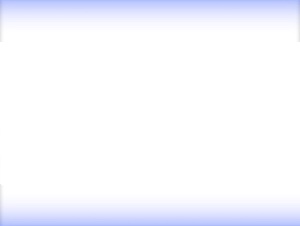Sara Masüger

Absalon
After cutting short his military service in Israel, Absalon dropped out and lived in a wooden hut on the beach in Tel Aviv, before finally emigrating ...
read more 
George Brecht
A chemist by education and an inventor of hygiene articles, George Brecht wanted to use his art to ensure “that the details of everyday life, the random ...
read more 
Heinz Gappmayr
One important factor is that Gappmayr’s works are not only made of language, i.e. the form of their presentation – be it textual, oral or on data carriers ...
read more 
Harald Klingelhöller
Although minimalism has reduced sculpture to basic aesthetic figures, the symbolism removed from the object has been re-inscribed in the form of the sculpture’s ...
read more 
Yoko Ono
In the exhibition:
Yoko OnoTHE WALK TO THE TAJ MAHAL, 1964/2021From six film scripts by Yoko Ono, Tokyo, June 1964 Facsimile print27,94 × 21,59 cm© Yoko ...
read more 
Mark Tobey
In his picture series White Writings, Mark Tobey creates labyrinthine rhizomatic entanglements out of repetitive, white brushstrokes on dark backgrounds. ...
read more 
Mirosław Bałka
You see what you see, almost nothing, that is, or merely a piece of wall, its surface a bit rough, slightly dirty here and there. A wall that people have ...
read more 
Ulrike Draesner
In the exhibition:
Ulrike DraesnerBe-Sprechbarkeit, 2021Space Essay, Text, White print on textileCourtesy of the artist
Additional information about ...
read more 
Katharina Fritsch
When, in 1987, as part of the Skulptur Projekte Münster, Katharina Fritsch exhibited her monochrome yellow Madonna Figure in the centre of Münster, positioning ...
read more 
Eugen Gomringer
Eugen Gomringer, who was hailed by Emmett Williams as the father of concrete poetry, saw the poetic text as “a visual object and utensil: an object of ...
read more 
Stephan Huber
The artist Stephan Huber calls himself a modern allegorist inspired by the traditions of the southern German baroque and Latin Catholicism, with a strong ...
read more 
Alfonso Hüppi
A prominent representative of object art, Alfonso Hüppi is concerned with an aesthetic analysis of form, while also focusing on the usability of everyday ...
read more 
Reiner Maria Matysik
Reiner Maria Matysik focuses his artistic work on the dialogue between science and the visual arts. He draws on an extensive repertoire of various materials ...
read more 
Thomas Rentmeister
With its monolithic and erratic appearance, the object assembly Taint created by the sculptor and installation artist Thomas Rentmeister transfixes the ...
read more 
Gregor Schneider
Gregor Schneider has been working since the mid-1980s with built and deconstructed spaces, voids and imperfections. At the heart of his artistic work ...
read more 
George Segal
Disappointed by the possibilities offered by painting, George Segal developed a new kind of visual language in the 1960s by producing human figures – ...
read more 
Hans Haacke
The German conceptual artist Hans Haacke developed an activist and critical artistic stance that has an ongoing relationship with its specific political ...
read more 
Astrid Klein
Astrid Klein uses photography and sculpture to address and question the “specific recognition of reality. Moreover, in her [...] paintings, she has staged ...
read more 
Inge Mahn
The sculptress Inge Mahn takes objects, both large and small, from our everyday lives – including towers, curtains, cupboards, chairs, tables, flags and ...
read more 
Günther Uecker
Early on in his career, Mecklenburg-born artist Günther Uecker turned against the predominant art movements of the 1950s: socialist realism in the GDR ...
read more 
Timm Ulrichs
Two black-and-white photographs – the naked upper body of Timm Ulrichs – one taken from the front, one from the back. Some parts of the body are covered ...
read more 
Raimund Kummer
In a physical act repeated countless times, Raimund Kummer etched the sentence “Ich werde blind” (“I am going blind”, 1973) on a copper plate, then “blindly” ...
read more 
Jochen Gerz
“...he brings work and the image back to their origin. ‘Weissʼ (‘whiteʼ) is composed of letters: signs. White is only understandable through its opposite: ...
read more 

